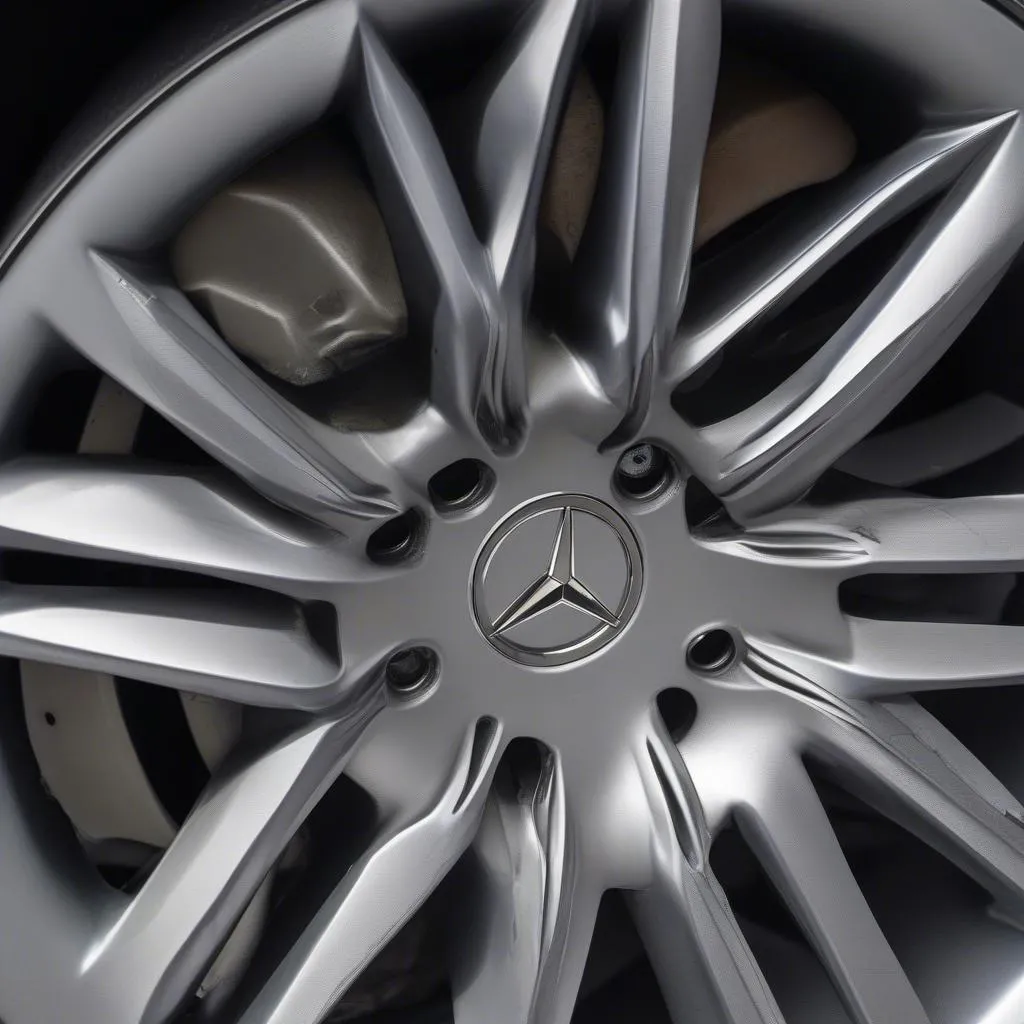Experiencing a collision can be a stressful event, especially when it comes to the aftermath of repairs. If your Mercedes-Benz has been involved in a front-end collision, you might be dealing with a misaligned or damaged front wheel. This issue not only affects your car’s handling but also compromises your safety on the road. Let’s break down the process of diagnosing and fixing this problem, ensuring your Mercedes-Benz gets back to its optimal performance.
Causes of Front Wheel Issues After a Collision
A collision’s impact can wreak havoc on your Mercedes-Benz’s front-end components. Here’s what usually causes front wheel problems:
- Suspension Damage: The force of the impact can bend or break suspension components like control arms, tie rods, or ball joints, directly affecting wheel alignment and stability.
- Bent Wheel Hub: The wheel hub, which connects the wheel to the suspension, can bend upon impact, causing the wheel to sit at an awkward angle.
- Steering System Damage: A collision can damage steering components such as the steering rack, tie rod ends, or even the steering wheel column.
- Tire Damage: It’s not just about the wheel itself. The tires might have suffered punctures, sidewall damage, or uneven wear due to the impact.
Identifying the Problem
To get your Mercedes-Benz back on track, it’s crucial to pinpoint the root of the problem. Here are some tell-tale signs of a front-wheel issue:
- Vehicle Pulling: If your car pulls to one side while driving, it usually indicates misalignment, possibly due to damaged suspension or steering components.
- Uneven Tire Wear: Notice abnormal wear patterns on your tires? It could be a symptom of a misaligned wheel.
- Steering Wheel Vibration: A vibrating steering wheel, especially at higher speeds, can signal a bent wheel, a damaged tire, or suspension issues.
- Strange Noises: Unusual clunking, banging, or grinding sounds from the front end when driving over bumps or turning can point towards suspension or steering component damage.
Equipment for Repair
Repairing a Mercedes-Benz front wheel after a collision requires specialized tools to ensure accuracy and safety. Here’s what you’ll likely need:
- Jack and Jack Stands: To safely lift and secure the vehicle.
- Lug Wrench: For removing the lug nuts that hold the wheel in place.
- Socket Set and Wrenches: To dismantle and reassemble suspension and steering components.
- Torque Wrench: Essential for tightening bolts to the manufacturer’s specifications, crucial for safety.
- Alignment Equipment: A professional wheel alignment is a must after any front-end repair to ensure proper handling.
Repair Procedures
Important: Unless you have advanced mechanical skills and the right equipment, it’s highly recommended to take your Mercedes-Benz to a qualified mechanic or dealership specializing in collision repairs. Attempting complex repairs yourself could lead to further damage or compromise your safety.
General Repair Steps (for informational purposes only):
- Inspection: Thoroughly inspect all front-end components for visible damage or bending.
- Component Replacement: Replace any damaged parts such as control arms, tie rods, ball joints, or wheel hubs.
- Wheel Alignment: Perform a four-wheel alignment to ensure all wheels are pointing in the correct direction.
- Tire Inspection and Replacement: Inspect tires for damage and replace them if necessary.
FAQs
Q: Can I drive my Mercedes-Benz with a front wheel issue after a collision?
A: It’s strongly advised against driving your car if you suspect front-wheel damage. Doing so can worsen the damage and put your safety at risk. Have it towed to a trusted mechanic or dealership.
Q: How much does it cost to fix a front wheel on a Mercedes-Benz after a collision?
A: Costs vary greatly depending on the extent of the damage, the specific Mercedes-Benz model, and labor rates in your area. It’s always best to get a quote from a reputable repair shop.
Q: Can a diagnostic tool help identify front wheel problems?
A: While not all front-wheel issues trigger diagnostic trouble codes, a professional-grade diagnostic tool like those from CARDIAGTECH can be helpful in identifying problems with the electronic steering systems or other related modules.
Q: “My steering wheel feels off-center after the collision, even after repairs. What could be the issue?”
A: As John Smith, an experienced automotive engineer, explains in his book “Automotive Collision Repair Essentials,” an off-center steering wheel even after an alignment could point to an issue with the steering rack itself. It’s crucial to have this checked by a professional.
Conclusion
Addressing front wheel issues after a collision is crucial for restoring your Mercedes-Benz’s performance and, most importantly, your safety. While a DIY approach might seem tempting, remember that these repairs require specialized knowledge and tools. Entrusting your car to experienced professionals is always the safest route.
 Damaged Mercedes Wheel
Damaged Mercedes Wheel
 Car on a Lift for Inspection
Car on a Lift for Inspection


